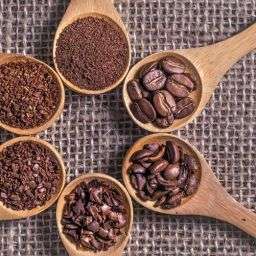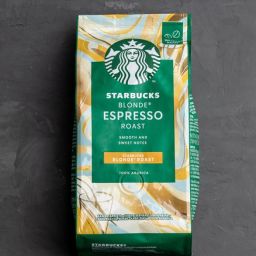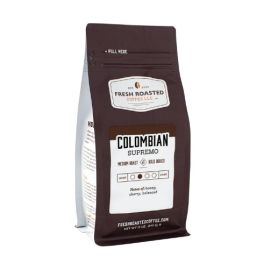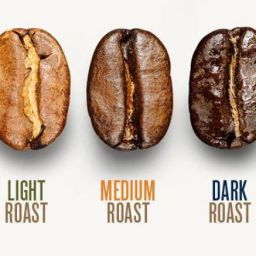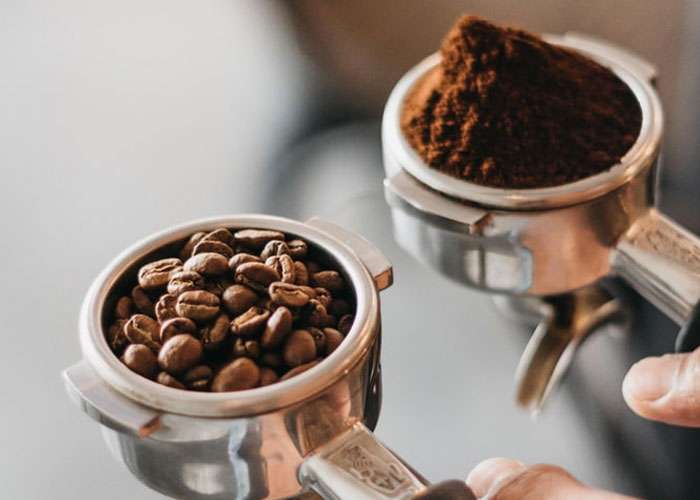
Espresso stands as a cornerstone of coffee culture, celebrated for its rich flavor and creamy texture. This beloved coffee style, originating from Italy, has gained worldwide acclaim, not just for its strong taste but also for the artistry and precision involved in its preparation. At the heart of crafting the perfect espresso shot is the process of grinding coffee beans.
The grind size and consistency are pivotal; they influence the extraction rate and, ultimately, the taste of the espresso. Achieving the right grind is a balancing act—a coarse grind can lead to a weak, under-extracted shot, while a grind that’s too fine may cause over-extraction, resulting in bitterness.
Grinding coffee beans for espresso typically takes about 15-30 seconds using a burr grinder to achieve a fine, consistent grind size necessary for optimal espresso extraction.
Key Takeaways
- Grind Size Matters: The ideal grind size for espresso is fine, but not powdery. This size ensures optimal water contact without slowing down the extraction process too much.
- Choose the Right Grinder: Burr grinders are preferred over blade grinders for their ability to produce consistent, fine grinds suitable for espresso. The uniformity in grind size is crucial for even extraction.
- Freshness of Beans: Freshly roasted beans are essential for the best espresso. The fresher the bean, the more flavorful and aromatic the espresso will be. Using beans within weeks of roasting will yield the best results.
- Consistency Is Key: Consistent grind size and brewing parameters are essential for replicable quality in each shot. Variations can lead to noticeable differences in taste.
- Maintenance Matters: Regular cleaning and maintenance of your grinder will help ensure consistent grind quality and prolong the life of your equipment.
The Importance of Grind Size
Grind size plays a pivotal role in espresso preparation, acting as the key to unlocking the rich flavors and aromas of the coffee bean. In espresso making, the water is forced through the coffee grounds at high pressure, meaning the grind size directly affects the extraction process and the final taste of the espresso. A fine grind is essential because it increases the surface area in contact with water, allowing for the full extraction of flavors within a short period. If the grind is too coarse, the espresso may turn out weak and under-extracted, lacking depth and complexity.
Conversely, an overly fine grind can lead to over-extraction, making the espresso taste bitter and harsh. Achieving the perfect grind size ensures a balanced, flavorful, and aromatic espresso shot, showcasing the unique characteristics of the coffee bean.
Blade Grinder vs. Burr Grinder
When it comes to grinding coffee for espresso, the type of grinder you use can make a significant difference. Blade grinders, which chop beans with a spinning blade, tend to produce an uneven grind, with a mix of fine and coarse particles. This inconsistency can negatively affect the taste of your espresso, leading to uneven extraction. Burr grinders, on the other hand, crush beans between two abrasive surfaces (burrs), producing a uniform and consistent grind. This consistency is crucial for espresso, where precision matters.
Burr grinders also allow for adjustable settings, enabling you to dial in the perfect grind size for your espresso machine. The superiority of burr grinders lies in their ability to provide a consistent, fine grind that’s ideal for extracting the full flavor and aroma of the coffee bean, making them the preferred choice for espresso aficionados.
The Role of Freshness in Coffee Grinding
Freshness is a cornerstone of great espresso. From the moment coffee beans are roasted, they begin to lose their freshness, along with the volatile compounds that contribute to their flavor and aroma. Using fresh beans for your espresso ensures that you capture the bean’s full potential, offering a more vibrant and complex cup.
Grinding the beans right before brewing is equally important, as pre-ground coffee quickly loses its nuances. Freshly ground beans mean more flavor, more aroma, and a more delightful espresso experience overall. To truly savor the essence of espresso, prioritize the freshness of your beans and grind them just before brewing.
Step-by-Step Guide to Grinding Espresso Beans
Before grinding your beans for that perfect shot of espresso, start with selecting high-quality, fresh beans that align with your taste preferences. The fresher the beans, the more flavorful your espresso. Measure the amount of coffee you need carefully; a good rule of thumb for espresso is to use about 18-20 grams of coffee per double shot. Using a scale for this step can enhance precision, ensuring a consistent strength and flavor profile for your espresso.
Grinding Process Explained
To grind coffee beans for espresso, follow these steps closely:
- Select Your Grinder: A burr grinder is highly recommended for espresso due to its ability to produce a fine, consistent grind.
- Adjust the Grind Size: Set your grinder to a fine grind setting. Espresso requires a fine grind to ensure optimal extraction but avoid going too powdery.
- Measure and Load: Measure your coffee beans and load them into the grinder. If you’re aiming for a double shot, 18-20 grams of coffee is ideal.
- Grind: Activate your grinder. The process should take a few seconds, and you should end up with a fine grind that’s slightly gritty to the touch.
- Check Consistency: The ground coffee should be uniform in size. An even grind is crucial for a balanced extraction and flavor.
Checking Your Grind Size and Quality
After grinding, it’s important to check the grind size and quality to ensure it’s appropriate for espresso. The grind should feel fine but not so powdery it clumps together, akin to table salt’s consistency but slightly finer. To test, pinch some grounds between your fingers. They should stick together but also easily break apart. If the grind is too coarse, the espresso will be weak and under-extracted. If it’s too fine, you risk over-extraction, resulting in a bitter taste.
Adjust your grinder settings as needed based on your assessment and taste test the results. Regularly checking and adjusting the grind size is key to achieving consistent, high-quality espresso shots.
Grinder Maintenance and Cleaning
To keep your grinder in tip-top shape, regular maintenance and cleaning are crucial. Start by disassembling the removable parts and washing them with warm soapy water. For areas that can’t be washed, use a stiff brush to remove leftover coffee grounds. Wipe down the exterior with a damp cloth to remove dust and grime.
Checking the grinder burrs for wear and tear is also essential; worn burrs can significantly impact your grind quality. Replace them when necessary to ensure your espresso grind remains consistent and delicious.
Tips for Achieving Consistency in Grinding
Achieving a consistent grind every time is key to espresso perfection. Using a scale to measure your beans before grinding can make a huge difference, ensuring you’re working with the exact amount each time. Also, consider using a timer to standardize the grinding duration. Regularly cleaning your grinder can prevent old grounds from mixing with fresh ones, maintaining the consistency of grind size and flavor. These simple habits can dramatically improve the quality and consistency of your espresso shots.
Grinder Settings and Adjustments
Adjusting your grinder settings for espresso can seem daunting, but with a bit of know-how, it’s a manageable task. Start with your grinder’s manual to understand the basic settings. For espresso, you’ll typically want a fine grind, but the exact setting can vary depending on your machine and the beans you’re using.
- Experimentation: Small adjustments can have a big impact. Start with a recommended setting for espresso and adjust one notch at a time until you find the perfect grind. Look for a grind that feels like fine sand but isn’t powdery.
- Recording Results: Keep a log of your settings and the results. This will help you find your preferred setting faster next time you change beans or if the grinder has been adjusted.
- Grinder Recommendations: For popular burr grinders like the Baratza Encore, settings around 4-9 are often recommended for espresso. However, this can vary based on the model and the specific coffee bean you’re using. For example, some grinders like the Capresso Infinity might require a setting between 2 and 4 for a similar espresso grind.
The Impact of Water Temperature and Flow Rate
The water temperature and flow rate are critical in espresso extraction, profoundly affecting the flavor and quality of your shot. Water temperature should ideally be between 195°F and 205°F. This range ensures that all the delicate flavors and aromas are effectively extracted without burning the coffee. Meanwhile, the flow rate, or how quickly the water passes through the grounds, needs to be carefully controlled. A flow that’s too slow may over-extract, leading to bitterness, while a too-fast flow can result in a weak, under-extracted espresso. Balancing these two elements is key to unlocking the perfect espresso.
FAQs
- How many seconds is 2 shots of espresso? For a double shot, the ideal extraction time is between 25-30 seconds. This timeframe is crucial for achieving the rich and flavorful essence characteristic of a well-brewed espresso.
- How many grams should 2 shots of espresso be after pulled? For a double shot, aim for 18-21 grams of coffee. This quantity helps ensure that the espresso is strong and full-bodied.
- Can you over grind coffee beans? Yes, grinding coffee too finely can impede water flow, leading to over-extraction and a bitter taste. It’s essential to find the right grind size for your espresso to maintain balance and flavor.
Final Thoughts
Mastering espresso involves understanding and manipulating various factors, from the grind size and consistency to the water temperature and flow rate. While the technical details may seem daunting at first, practice and experimentation are key to developing the skills needed to pull the perfect shot. Remember, the journey to espresso excellence is as rewarding as the destination, offering endless opportunities to explore and savor the rich flavors that coffee has to offer.





